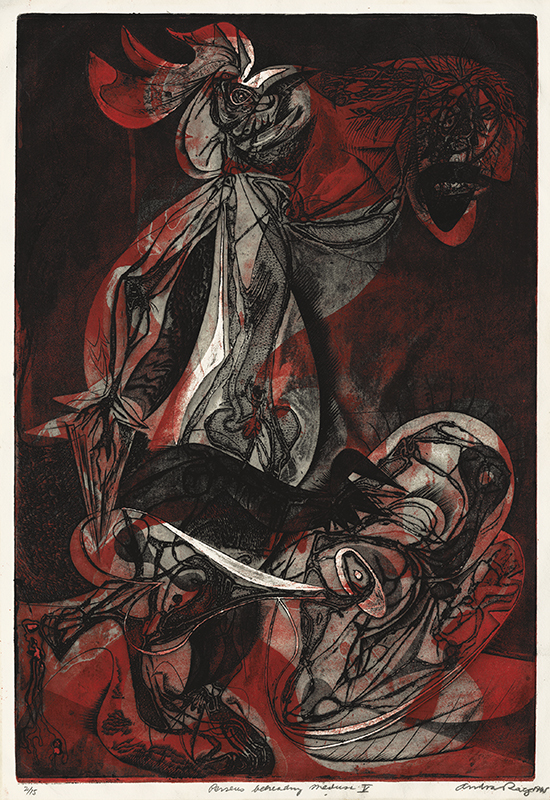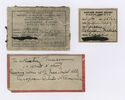
19th, 20th & 21st Century Fine Prints
707-546-7352 · fax 707-546-7924 · web: www.annexgalleries.com · email: artannex@aol.com
Perseus Beheading Medusa V by Andre Racz



Perseus Beheading Medusa V
Andre Racz
Perseus Beheading Medusa V
Andre Racz
1916 - 1994 (biography)Among the prints Racz produced at Atelier 17 in New York is this dramatic interpretation of the well-known mythic Greek hero-warrior Perseus, who victoriously holds the severed head of the slain Gorgon monster Medusa, whose powers include the ability to turn to stone those who dare look in her eyes. Perseus's story is a long and convoluted adventure. The son of Zeus and Danäe, Perseus embarked on a perilous journey to find and kill Medusa as a wedding gift for Polydectes, King of Serifos Island, who had pledged marriage to Danäe. Unbeknownst to Perseus, his mother had rejected the king's advances. On learning of the deception, Perseus holds the severed head of Medusa before the king and his court, turning all of them to stone.
The process of printing the actual plate, recorded by fellow studio member Leo Katz, is indicative of Atelier 17’s collaborative experimental environment:
"André Racz had just finished his Perseus plate. Lasansky was there and a few others, including myself. Someone cut the paper; another prepared the blankets. One turned spikes and I held the blankets stretched. We had forgotten whose plate it was. When finally someone lifted slowly the paper from the plate we knew we were looking at a print the like of which no one had seen before."
To create "Perseus Beheading Medusa, Racz first produced an automatic drawing by pouring gesso from a container upon a sheet of smooth board. After the gesso had dried, he sanded the relief to a uniform thickness, and then pressed it into a copper plate coated with a soft ground to transfer the image. Racz then etched and engraved the plate further, with aquatint and traditional burin, as well as with a scorper to gouge the copper deep enough to allow an inkless embossed line. When printed, the plate forged a rich and tonally varied image equal to the task of reflecting the macabre beheading of Medusa.
The text for this description has been adapted in part from an unpublished essay by former Penn State art history graduate student Barbara Kutis (MA 2007).
Racz created at least 8 versions of "Perseus...", in black and white and in various colors. Each state was printed in editions of between 15 and 25. This state, number V, has a 'headdress' added at the very top, like state IV. He printed a second, zinc plate, to add color to the composition, in this impression a red. There is another example of state V that is in green. The headdress is removed again by state VIII.

